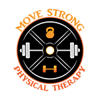Get Over the Shoulder Pain Hump
Shoulder pain is one of the most common “diagnoses” we see besides knee pain and low back pain. Whether it be shoulder pain with day to day movements and activities OR shoulder pain with going overhead in the gym or in an overhead athlete throwing a baseball or shooting in lacrosse.
As with any injury, we first want to reduce pain as well as improve mobility and motor control so the athlete can work on getting their arm and shoulder moving to progress back to their end goals - shoulder pain is no different.
But when shoulder persists, what happens when someone’s mobility looks good, they can raise their arm overhead and are progressing back towards 100%, but they still have pain?
As physical therapists, we are trained to “do no harm” and are instructed to avoid pain when working with our athletes and clients. There are certain scenarios where there may be “discomfort” and some pain is a normal part of the process of getting back to 100%.
There is a multitude of reasons why someone’s shoulder may hurt and the nervous system is complex so for the brevity of this post we won’t dive in.
When someone is out of the acute phase of their injury, 3 weeks or less, and have been waxing/waning with their shoulder pain, we want to implement some strengthening to help improve the resiliency of those tissues. If we never stress that tissue just right, then the athlete or client will constantly be 50-75% better and will have a difficult time getting over that hump.
So what do we do? Well, we load that tissue. But, before we do, we have a conversation with the athlete or client and here are the very specific parameters we use with our strengthening at this point:
Pain no >3-5/10
As you do more reps, the pain stays 3-5/10 or lessens.
As you do more sets, the pain stays 3-5/10 or lessens.
When you stop the movement, the pain stops.
The next day, it feels the same/better, no worse.
We use these specific parameters so that when we are loading that tissue, it is just enough of a stimulus and no over or under-doing it. We also make sure to incorporate a slow eccentric as this can help strengthen tissues and help with pain reduction. A slow eccentric is a slow and controlled lowering of the weight. For reps and sets, we typically program 3 sets x 8-12 reps.
As far as movements we like to incorporate for the shoulder, here are just a few:
Bicep Curl to Slow Eccentric Shoulder Flexion
2 to 1 Slow Eccentric Lateral Landmine Press
We will also do this same movement pressing straight overhead vs turning the body as shown above.
Landmine Press to Walk-In
Those are just a few of the movements we like to add in when we are working with a client or athlete coming back from shoulder pain. Make sure to stick to those parameters mentioned above and do slow and controlled movements during the lowering portion of the movement.
At the end of the day, if you are not seeing an improvement in your shoulder pain, seek out a licensed medical provider.
Related Blog: Exercises for Shoulder Pain When Doing Push-Ups
Move Strong Physical Therapy provides physical therapy in Hudson, MA. Schedule an appointment today.



